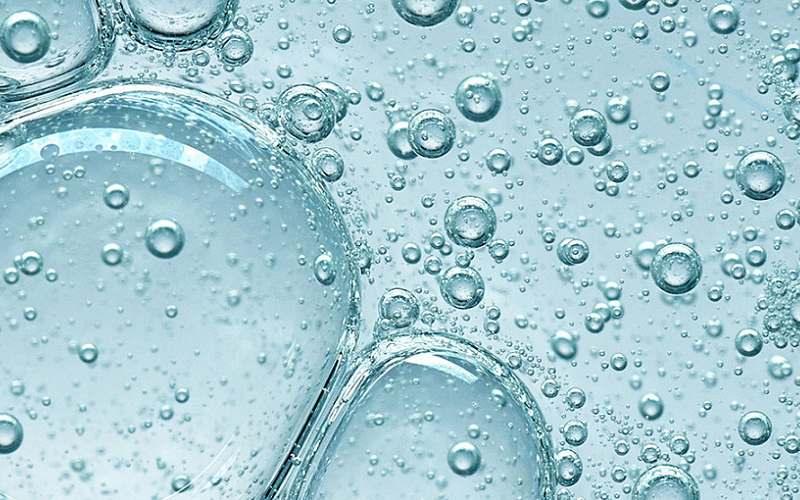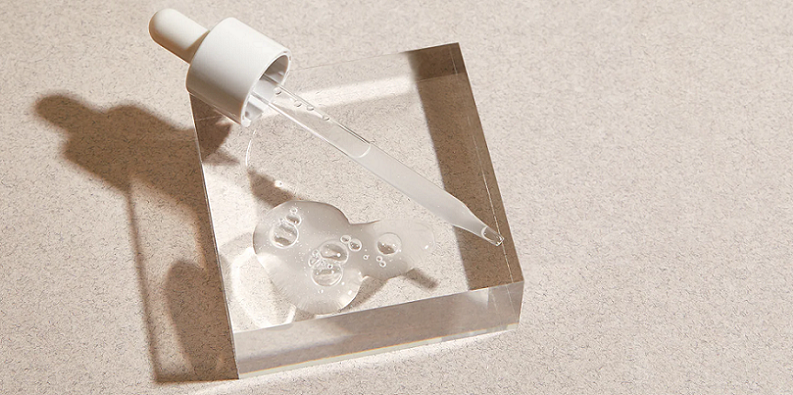
In a world where harsh chemicals and abrasive treatments dominate the conversation, Polyhydroxy Acids (PHAs) emerge as a kinder alternative. These innovative compounds offer a softer approach to exfoliation, making them ideal for sensitive skin types and those seeking a more nurturing skincare experience. Unlike their more aggressive counterparts, such as Alpha Hydroxy Acids (AHAs) and Beta Hydroxy Acids (BHAs), PHAs provide a milder exfoliation, reducing the risk of irritation while delivering comparable results.
Contents
Introduction to Polyhydroxy Acids (PHAs)
In a world where skin health is increasingly valued, understanding the role and benefits of different skincare ingredients is vital. Polyhydroxy Acids (PHAs) are the gentler chemical exfoliants that are revolutionizing skincare routines.
Definition and Overview of Polyhydroxy Acids (PHAs)
Polyhydroxy Acids, commonly known as PHAs, are a group of chemical exfoliants that have gained popularity for their gentle nature. Unlike their counterparts – Alpha Hydroxy Acids (AHAs) and Beta Hydroxy Acids (BHAs) – PHAs are larger in molecular size, which allows them to penetrate the skin more slowly and less deeply. This unique property makes them less irritating and more suitable for sensitive skin types. PHAs not only exfoliate the skin but also offer additional benefits such as hydration and antioxidant support.
Importance of Skincare and Chemical Exfoliants
Skincare is more than just a beauty routine; it’s a crucial part of overall health and well-being. Chemical exfoliants play a significant role in skincare by removing dead skin cells, promoting cell turnover, and revealing brighter, smoother skin. They can help address various skin concerns, from acne and hyperpigmentation to fine lines and texture. Understanding the different types of chemical exfoliants and their specific benefits is essential in choosing the right product for your skin needs.
Brief Comparison with Other Types of Chemical Exfoliants (AHAs, BHAs)
To fully appreciate the uniqueness of PHAs, it’s important to compare them with other chemical exfoliants like AHAs and BHAs. AHAs, such as glycolic and lactic acid, are water-soluble and known for their ability to exfoliate the skin surface. BHAs, like salicylic acid, are oil-soluble and penetrate deeper into the pores to address issues like acne and oiliness. PHAs, on the other hand, offer a milder exfoliation and are less likely to cause skin irritation, making them a preferred choice for those with sensitive or reactive skin [1].
Understanding PHAs
Polyhydroxy Acids (PHAs) are more than just a skincare trend; they represent a significant advancement in the realm of skin health. To fully grasp their impact, it’s essential to get into the specifics of what PHAs are, their origins, and how they differ from other exfoliants. This deeper understanding will not only enrich your knowledge but also help you make informed choices for your skincare regime.
History and Development of PHAs in Skincare
The journey of PHAs in skincare is a testament to the ongoing evolution of beauty science. Initially developed in the 1990s, PHAs were designed as a gentler alternative to the more well-known AHAs and BHAs. Their development was driven by the need to provide effective exfoliation for more sensitive skin types that could not tolerate the stronger effects of traditional acids. Over the years, PHAs have been refined and have gradually emerged as a popular ingredient in a variety of skincare products, valued for their gentle yet effective properties.
Chemical Structure and Properties of PHAs
At the molecular level, PHAs are characterized by their larger structure compared to AHAs and BHAs. This larger size means they cannot penetrate the skin as deeply, resulting in a gentler exfoliation process. Common PHAs include gluconolactone and lactobionic acid. Besides their exfoliating properties, PHAs are also known for their humectant capabilities, which help attract moisture to the skin, and their antioxidant properties, which help fight free radical damage [2].
Key Differences Between PHAs and Other Exfoliants
Understanding the distinctions between PHAs and other chemical exfoliants is crucial in appreciating their unique place in skincare. Unlike AHAs and BHAs, PHAs provide a less intensive exfoliation, making them suitable for sensitive, dry, or eczema-prone skin. Furthermore, their humectant and antioxidant properties make them a multi-functional ingredient, offering benefits beyond mere exfoliation. PHAs are also known to be more hydrating and less likely to cause sun sensitivity, a common side effect associated with other acids.

Benefits of PHAs for Skin Health
Polyhydroxy Acids (PHAs) are not just another ingredient in the skincare world; they bring a multitude of benefits that cater to various skin health needs. Their gentle nature combined with their potent effects makes them a unique addition to skincare routines. Understanding the full spectrum of benefits offered by PHAs can help you appreciate why they are becoming increasingly popular among skincare enthusiasts and experts alike.
Gentle Exfoliation Suitable for Sensitive Skin
One of the primary advantages of PHAs is their ability to provide gentle exfoliation. This makes them particularly suitable for individuals with sensitive skin who might find other acids too harsh. PHAs work by loosening the bonds between dead skin cells, promoting their natural shedding without causing significant irritation. This leads to smoother, brighter skin with less risk of redness, peeling, or discomfort often associated with stronger exfoliating acids [3].
Moisturizing and Hydrating Effects
In addition to their exfoliating properties, PHAs are excellent humectants. This means they help attract and retain moisture in the skin, which is crucial for maintaining a healthy skin barrier. Hydrated skin not only looks more plump and radiant but is also better equipped to resist environmental stressors. The moisturizing effect of PHAs can also help in reducing the appearance of fine lines and impart a more youthful, dewy complexion.
Anti-Aging Properties: Reducing Fine Lines and Wrinkles
PHAs have shown promising results in the realm of anti-aging skincare. Their ability to gently remove dead skin cells helps in revealing a fresher, more youthful skin layer. Additionally, their hydrating properties ensure that the skin remains supple and less prone to the formation of fine lines and wrinkles. Regular use of PHAs can lead to an improvement in skin texture and firmness, contributing to an overall youthful appearance.
Enhanced Skin Barrier Function and Protection
Another significant benefit of PHAs is their role in enhancing the skin’s barrier function. By promoting a healthy exfoliation process and maintaining hydration levels, PHAs help in fortifying the skin’s natural defense mechanism. This enhanced barrier function is crucial in protecting the skin from pollutants, allergens, and other environmental aggressors. Furthermore, the antioxidant properties of PHAs help in combating oxidative stress, which can lead to premature aging and skin damage [4].

How to Incorporate PHAs into Your Skincare Routine
Integrating Polyhydroxy Acids (PHAs) into your skincare routine can be a transformative step towards achieving healthier, more radiant skin. PHAs are versatile and can be used in various forms, making them an accessible option for many. Whether you are new to chemical exfoliants or looking to switch to a gentler option, understanding the best ways to incorporate PHAs into your regimen is key to maximizing their benefits.
Identifying the Right PHA Products for Your Skin Type
The first step in incorporating PHAs is to find the right product that suits your skin type and concerns. PHAs are available in various skincare formulations, including cleansers, toners, serums, and creams. For sensitive or dry skin types, a PHA-infused moisturizer or serum might be ideal. Those with oilier skin may prefer a PHA toner or cleanser. It’s important to read the product labels and choose formulations that align with your specific skin needs [5].
Step-by-Step Guide to Using PHA Products
Once you have selected a PHA product, integrating it into your routine should be done gradually. Start by applying the product once or twice a week, observing how your skin reacts. If your skin tolerates it well, you can gradually increase the frequency. It’s essential to apply PHA products to clean, dry skin. For serums and creams, apply them after cleansing and toning but before heavier moisturizers. Always follow the specific instructions provided on the product label.
Combining PHAs with Other Skincare Ingredients
PHAs can be combined with other skincare ingredients, but it’s crucial to do so wisely. They typically pair well with hydrating ingredients like hyaluronic acid and ceramides. However, be cautious when using them with other exfoliants, like AHAs or BHAs, to avoid over-exfoliation. It’s also advisable to consult with a skincare professional or dermatologist when planning to combine PHAs with potent ingredients like retinoids.
Tips for Beginners and Frequency of Use
For beginners, it’s important to listen to your skin and adjust the frequency of use accordingly. PHAs are generally well-tolerated, but individual skin responses can vary. If you experience any redness, dryness, or irritation, reduce the frequency of application. Remember, the goal is to achieve gradual improvement in skin health, not immediate results. It’s also crucial to wear sunscreen during the day as exfoliating can make your skin more sensitive to the sun.
References
[1] Everything You Need To Know About PHAs
[2] A Guide to Polyhydroxy Acid, Skincare’s Buzziest (and Gentlest) Acid
[3] Polyhydroxy Acid 101: Your Guide to the Most Gentle Exfoliant
[4] The use of polyhydroxy acids (PHAs) in photoaged skin
[5] How To Use Polyhydroxy Acids To Exfoliate Your Skin, According To Dermatologists
